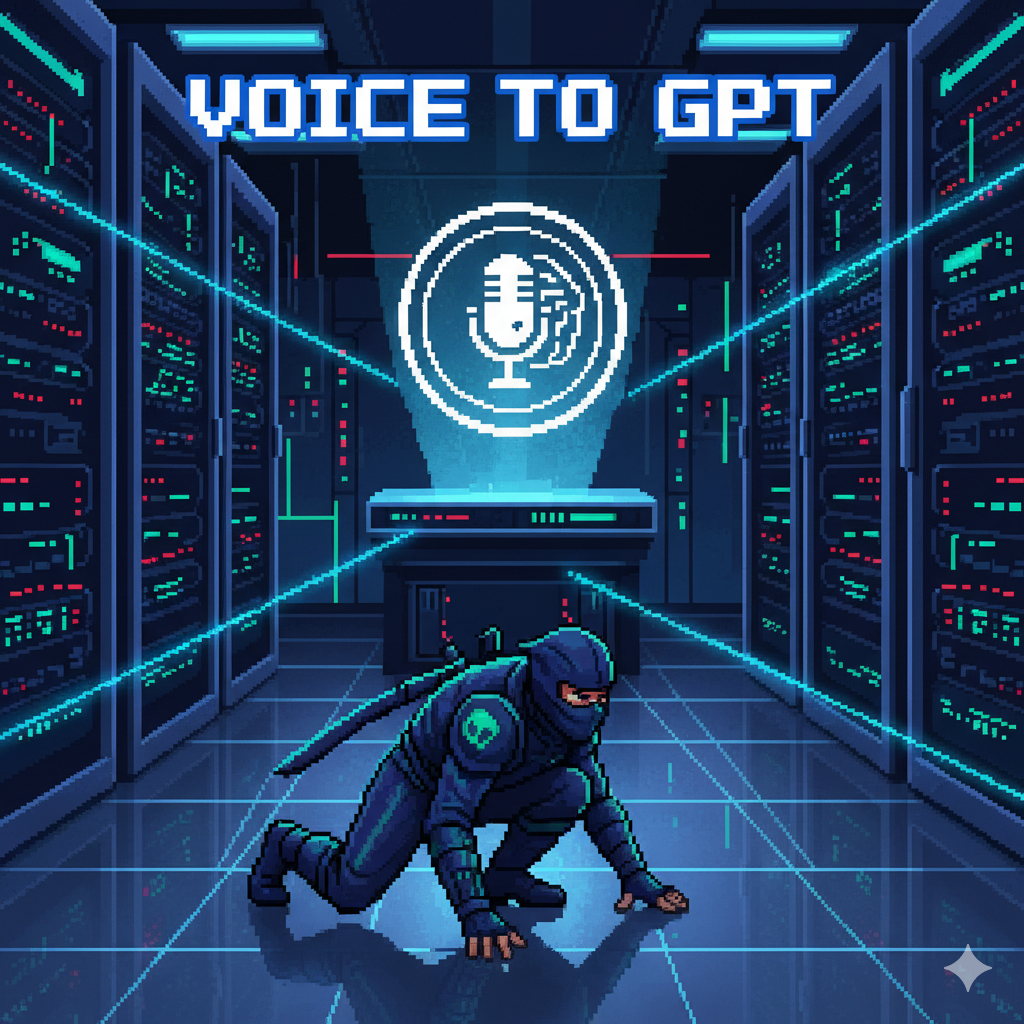Two months ago, I embarked on a side project that would challenge me to build something entirely from scratch: NXROLE.com, an AI-powered SaaS platform designed to help job seekers create compelling, ATS-optimized resumes that actually get noticed by recruiters.
The inspiration came from witnessing countless talented professionals struggle with the modern job market. Despite having impressive skills and experience, many were getting filtered out by Applicant Tracking Systems (ATS) before their resumes ever reached human eyes. I realized there was a significant gap in the market for intelligent, role-specific resume optimization.
The Technical Challenge
Building NXROLE.com required integrating multiple complex systems into a seamless user experience. Here's what I built:
- AI-Powered Resume Analysis: Integrated OpenAI's GPT-4 API with sophisticated prompt engineering to provide contextually relevant resume improvements, automated scoring, and role-specific content tailoring.
- Serverless Backend Architecture: Built a scalable REST API using AWS Lambda and DynamoDB, implementing secure user authentication and robust error handling with rate-limiting strategies to ensure reliable performance.
- React Frontend with Real-Time Features: Created a responsive TypeScript React application featuring an intuitive resume editor with real-time AI suggestions and interactive feedback workflows that guide users through optimization.
- Payment Integration: Seamlessly integrated Stripe for subscription management, handling the complexities of SaaS billing and user lifecycle management.
- Infrastructure as Code: Used Pulumi for automated AWS resource management, creating a streamlined deployment pipeline that ensures consistent and reliable infrastructure.
The AI Enhancement Process
One of the most challenging aspects was developing the AI enhancement system. The platform analyzes resumes across multiple dimensions:
- ATS Compatibility: Ensures proper formatting, keyword optimization, and structure that passes through automated screening systems
- Content Quality: Provides specific suggestions for improving impact statements, quantifying achievements, and highlighting relevant experience
- Role Alignment: Tailors content to match specific job requirements and industry expectations
- Professional Polish: Refines language, tone, and presentation for maximum impact
Key Features That Set NXROLE Apart
- Real-Time AI Feedback: Get instant, contextual suggestions as you edit your resume
- Resume Scoring System: Comprehensive analysis with actionable improvement recommendations
- ATS Optimization: Ensures your resume passes through applicant tracking systems
- Role-Specific Tailoring: AI adapts suggestions based on target roles and industries
- Interactive Enhancement Options: Choose from different AI enhancement styles and approaches
Technical Learnings and Challenges
This project pushed me into new territories and taught me valuable lessons:
- Advanced Prompt Engineering: Crafting effective prompts for consistent, high-quality AI responses required extensive iteration and testing
- SaaS Architecture: Building a complete SaaS from authentication to billing taught me the intricacies of subscription-based business models
- User Experience Design: Balancing powerful AI capabilities with an intuitive, non-overwhelming user interface was a constant challenge
- Performance Optimization: Ensuring fast response times when processing AI requests while managing API costs and rate limits
The Platform in Action
Here's a glimpse of what NXROLE.com looks like in action:
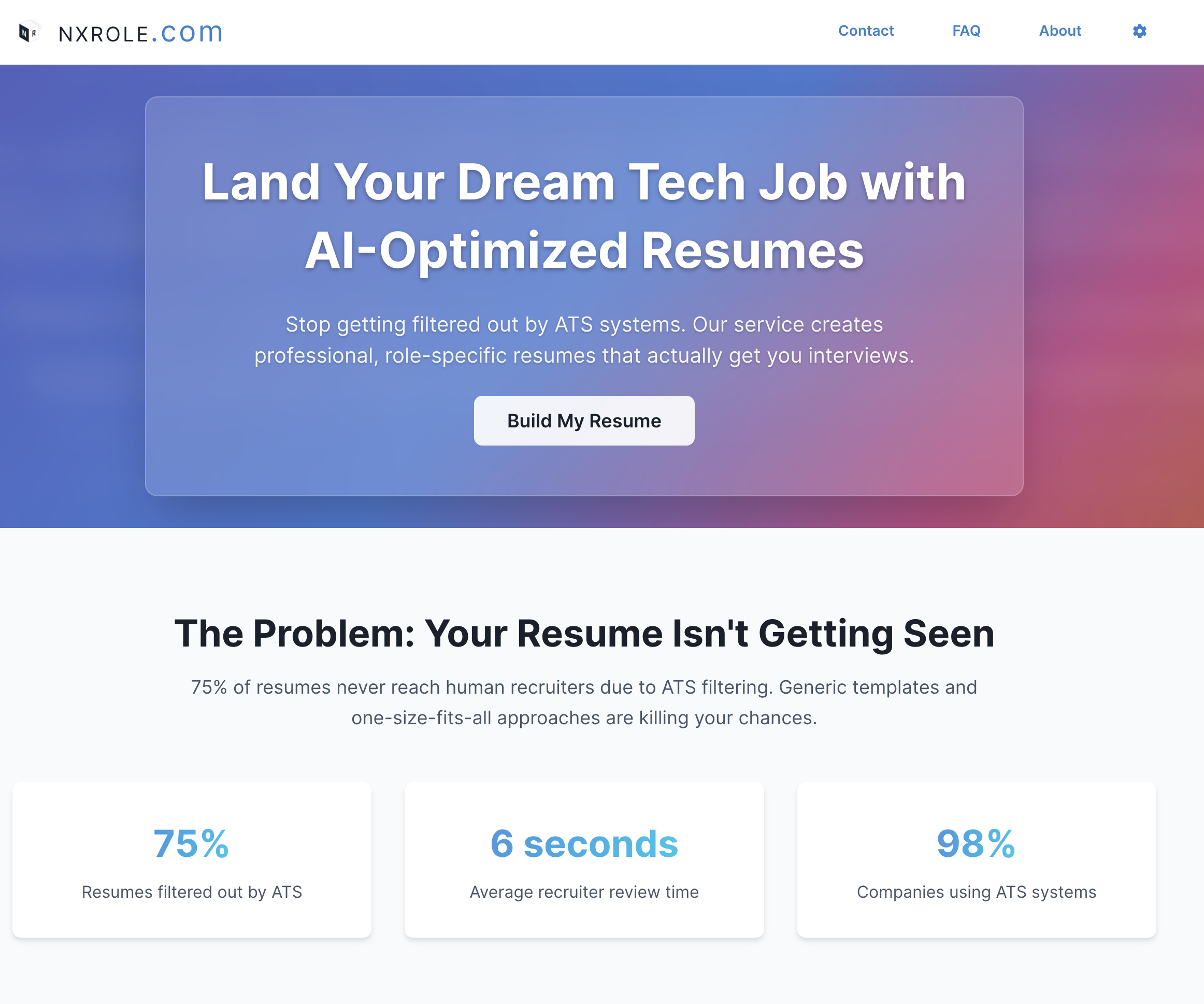
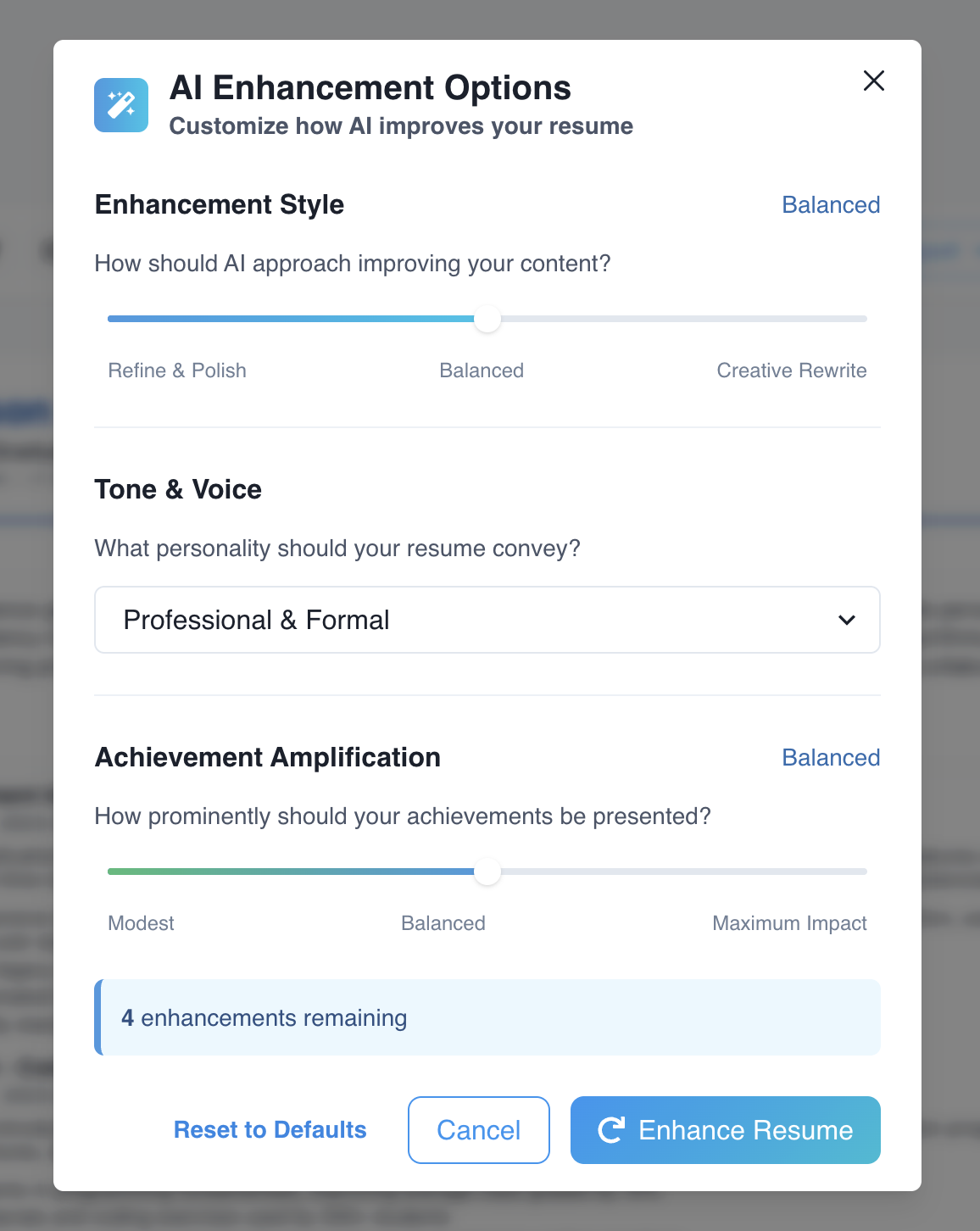
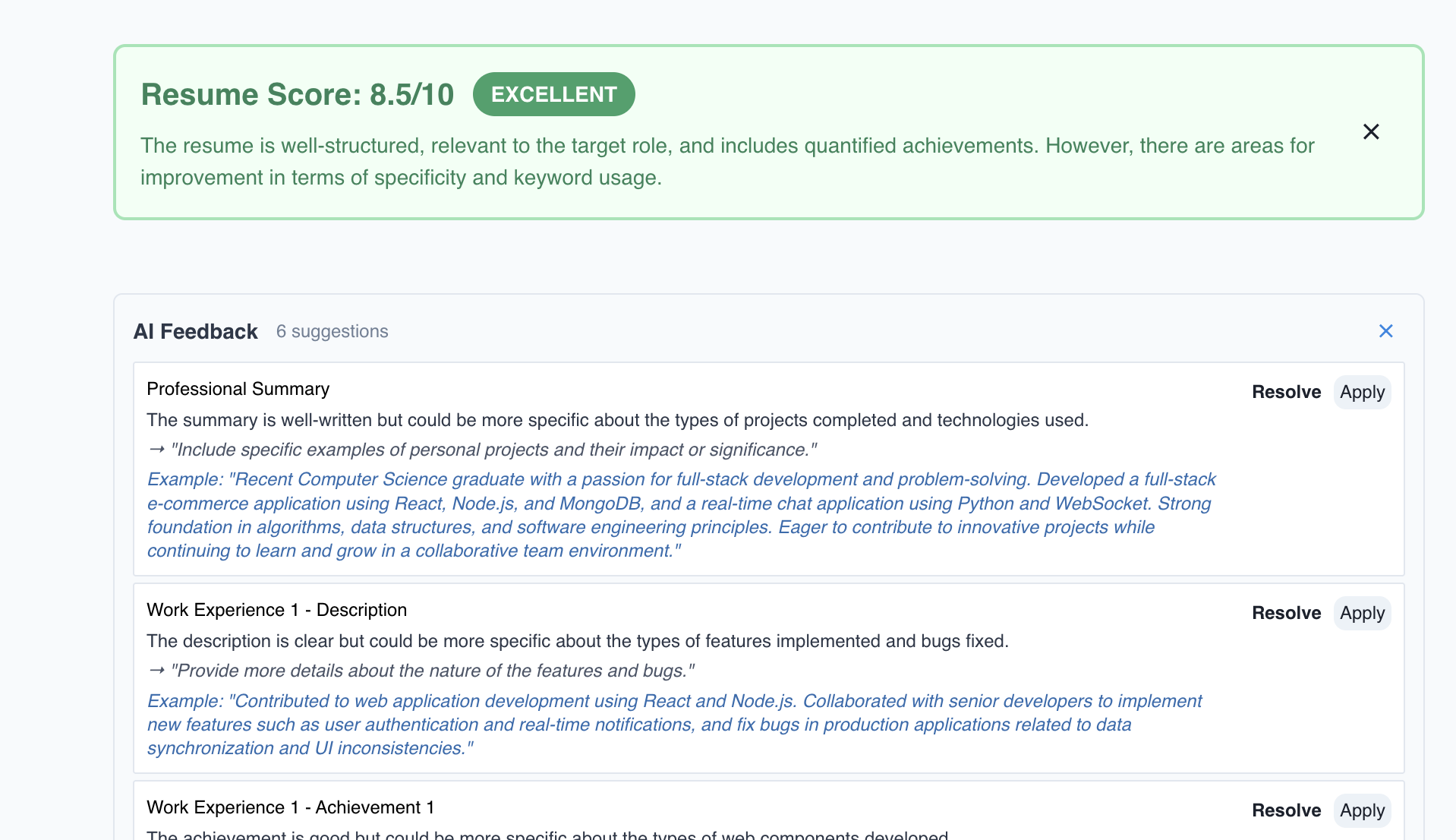
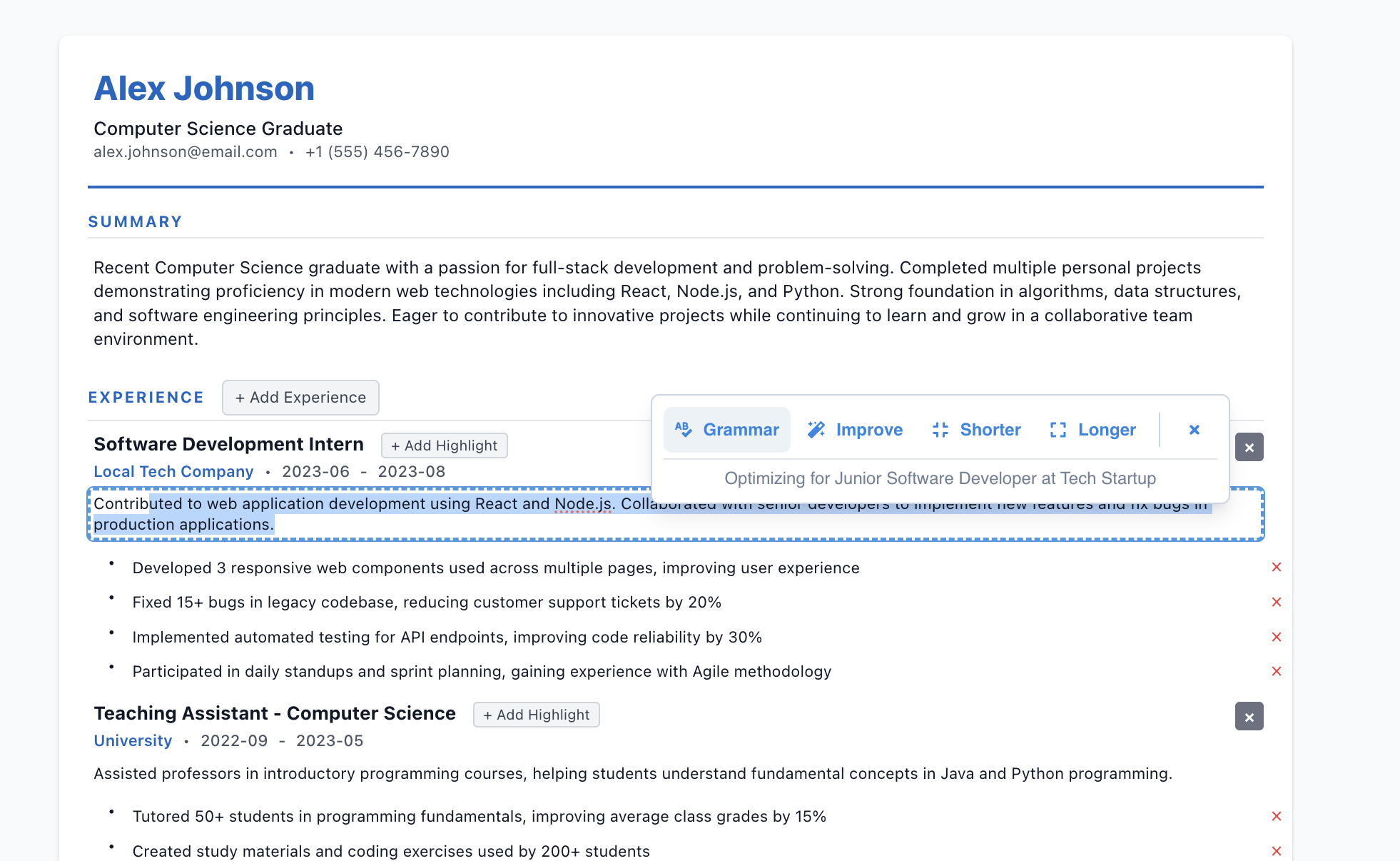
The platform features a clean, intuitive interface that guides users through the resume optimization process, from the initial landing page to comprehensive AI-powered editing and enhancement features.
Early Days and Learning
The platform is still in its early stages, and I'm continuously learning from user interactions and feedback. While it's too early to measure significant impact, the technical challenges of building a complete SaaS from scratch have been incredibly valuable for my growth as a developer.
Building NXROLE.com has been one of the most educational projects I've undertaken. It combines my passion for technology with a real-world problem that affects millions of job seekers. The platform represents my exploration into the intersection of AI innovation and practical utility.
If you're struggling with your resume or curious about how AI can enhance your job search, check out NXROLE.com and experience the future of resume optimization.
